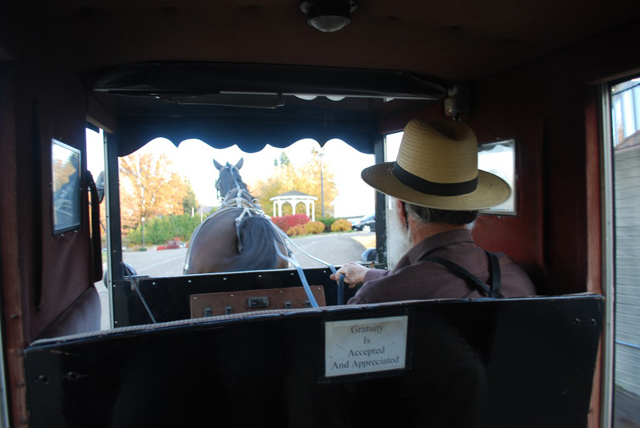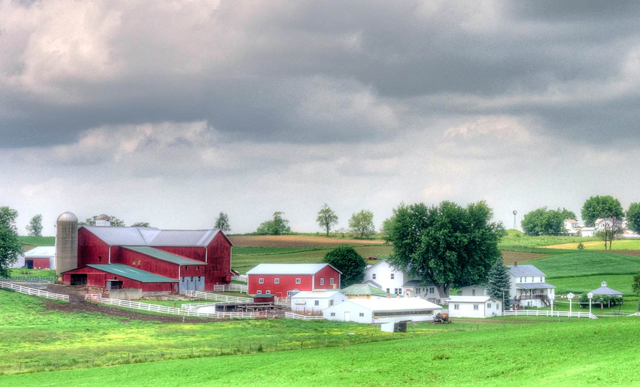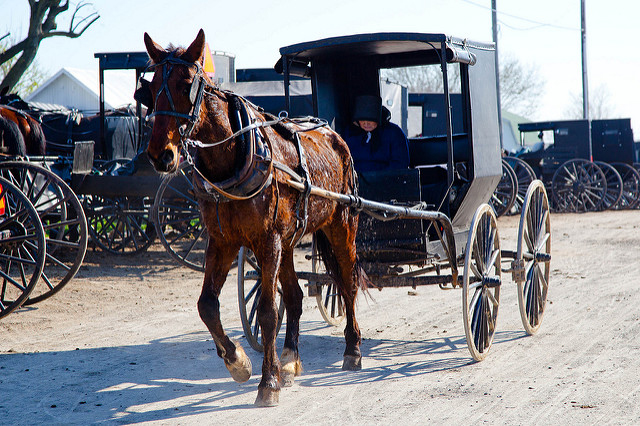The Guardian published a travel piece a week ago by a writer/photographer who visited the Amish of Holmes County, Ohio, for several days. Kate Eshelby, her husband and two sons flew into Columbus, Ohio, where they stayed for a couple days. But the focus of her article is on the large Amish settlement in Holmes County, a 90-minute drive away.
She mentions facts about the Amish in the county that might already be familiar to some readers: more Amish live in that Ohio county than in the much better known Lancaster County, Pennsylvania. She signed up for a two-day tour with Shelly Millage, an “English” woman guide who owns the business Amish Heartland.

They meet an Amish farmer named David who takes the family for a ride in a buggy. He gives the two boys turns sitting at the front of the buggy. As they move along the Ohio back roads, David explains that their reason for not owning cars is that they want to avoid the fast pace of modern American life. He says that they also avoid televisions and smartphones because “they tear down family time.”
While they eat home-made pizza and apple pie in the kitchen at David’s house, Shelly explains to the family that the Amish believe the Bible urges people to live simply. Hence, they do not have electricity in their homes. David elaborates: they don’t connect to the power grid and the rest of the world because they want to avoid conforming to it. Most Amish do have lights in their homes but the lighting is provided by kerosene or natural gas lanterns. However, he adds that the Amish are changing when they have to.
They used to all be farmers but increases in the cost of land have forced some of them to change and accept some machines. Some farmers use milking machines, powered by generators, because they do need more money in order to live. If they want their lifestyle to continue, he admits, they must accept some changes.

The group drives to another farmhouse where Anna invites them in. The mother of nine children explains that the silver wagon parked in the driveway is one of their church wagons. While Shelly’s two sons join with some of Anna’s kids in a game of football, the Amish woman explains that since they don’t have churches, they hold their worship services in their homes. Each family takes a turn hosting the service each week, she said, and the church wagons are used for carrying the supplies—hymn books, benches, plates—from one host family to the next.
Anna explains that a commitment to following Jesus should only be made by adults, so they believe in adult baptism into the faith. The truck parked outside the house belongs to one of Anna’s sons who is old enough to drive but not old enough to join the group—the so-called “rumspringa” period of running around and experimenting with the English way of life. Shelley explains that with only an education up through eighth grade, young Amish who do decide to go out into the world face many difficulties. Most decide to make a lifetime commitment to join the faith.

Ms. Eshelby includes other details about the trip to Holmes County, such as driving past a long line of parked buggies into an auction, a visit to a flea market, and a visit to a farmhouse where handmade baskets are sold. Among the highlights of The Guardian article are the interesting photos taken by the author, such as one of a farmer who is giving one of Ms. Eshelby’s sons a ride behind his team of three horses pulling a farm plow through a field.
Like many comparable travel articles, this one closes by supplying the costs: of a flight from London to Columbus, of overnight lodging at the hotels the family stayed in, and of the charge by the guide (£55 per hour) for the tour of the Holmes County Amish communities.